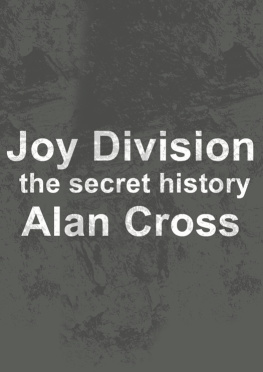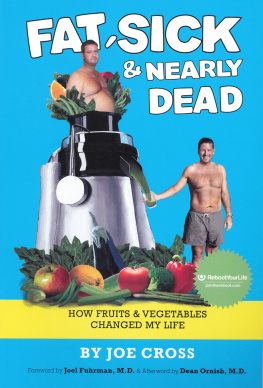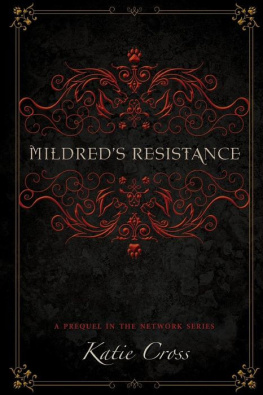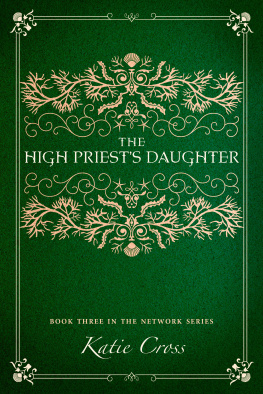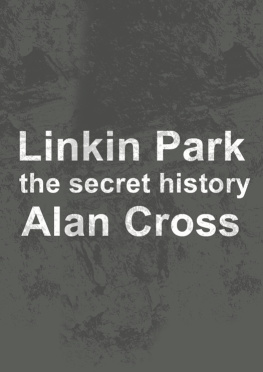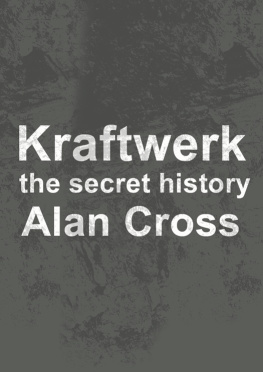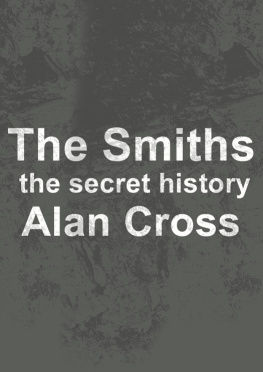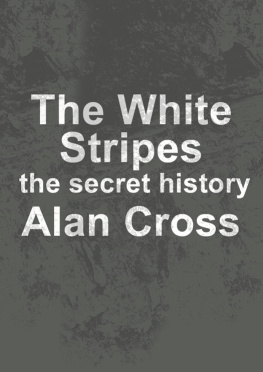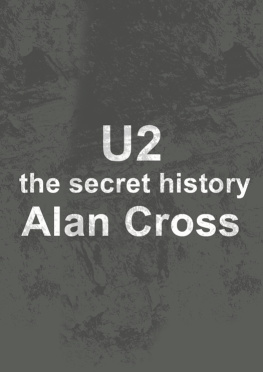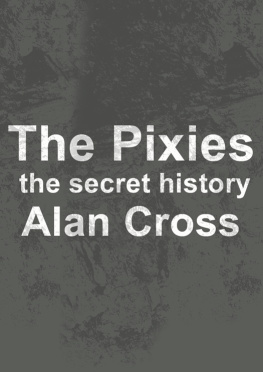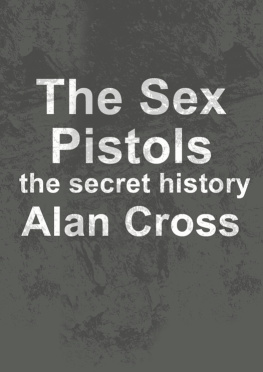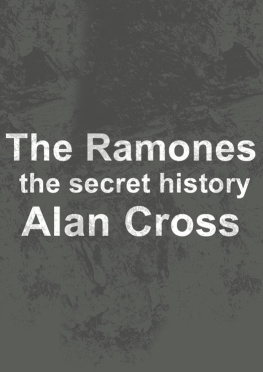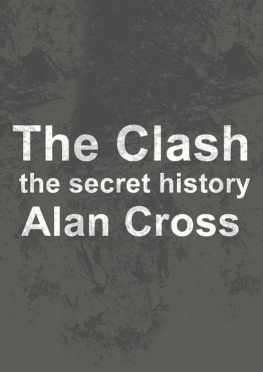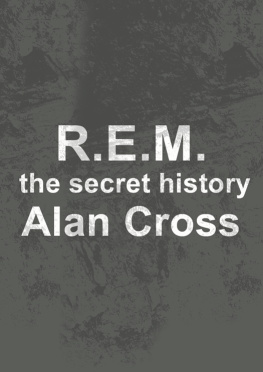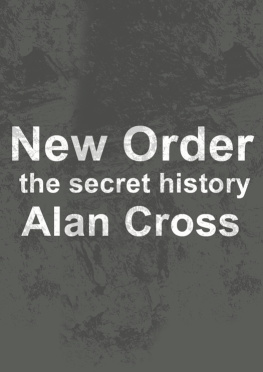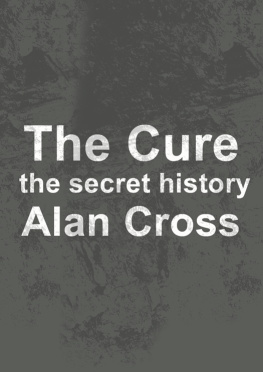Cross - Joy division: the secret history
Here you can read online Cross - Joy division: the secret history full text of the book (entire story) in english for free. Download pdf and epub, get meaning, cover and reviews about this ebook. year: 2011;2014, publisher: HarperCollins Canada;Audio Joe, genre: Non-fiction. Description of the work, (preface) as well as reviews are available. Best literature library LitArk.com created for fans of good reading and offers a wide selection of genres:
Romance novel
Science fiction
Adventure
Detective
Science
History
Home and family
Prose
Art
Politics
Computer
Non-fiction
Religion
Business
Children
Humor
Choose a favorite category and find really read worthwhile books. Enjoy immersion in the world of imagination, feel the emotions of the characters or learn something new for yourself, make an fascinating discovery.
- Book:Joy division: the secret history
- Author:
- Publisher:HarperCollins Canada;Audio Joe
- Genre:
- Year:2011;2014
- Rating:5 / 5
- Favourites:Add to favourites
- Your mark:
- 100
- 1
- 2
- 3
- 4
- 5
Joy division: the secret history: summary, description and annotation
We offer to read an annotation, description, summary or preface (depends on what the author of the book "Joy division: the secret history" wrote himself). If you haven't found the necessary information about the book — write in the comments, we will try to find it.
Joy division: the secret history — read online for free the complete book (whole text) full work
Below is the text of the book, divided by pages. System saving the place of the last page read, allows you to conveniently read the book "Joy division: the secret history" online for free, without having to search again every time where you left off. Put a bookmark, and you can go to the page where you finished reading at any time.
Font size:
Interval:
Bookmark:
It is a rare accomplishment for a band to continue after losing their lead singer. Its even more unusual for a group to carry on after any memberlet alone their lead singerdies tragically. The odds against three friends forming two successful bands are astronomical. And the chances of both these groups being good enough to change the course of musical history are even more remote. Yet this is the story of Joy Division and New Order.
Each band created their own distinct sphere of influence. Joy Division constituted an essential link between the original punk movement and many of the styles and sounds that came later. When the group died with singer Ian Curtis in 1980, their influence was perpetuated for years, swaddled in myth and mystery. Meanwhile, the survivors regrouped as New Order and went on to build musical bridges that created a rock-solid alliance between techno-pop, dance, new wave and the new indie alt-rock scene. Taken together, the effect of Joy Division and New Order is nothing less than staggering.
Ian Curtis was born in Manchester, England, on July 15, 1956. The son of a police detective, Ian loved to read, preferring to skip school in favor of staying in his room with his books and albums by the Velvet Underground, David Bowie and Iggy Pop. Part of his reticence regarding school was that he and his classmates were obligated to spend time at the local retirement homes, keeping company with the aged residents. The only thing that made these visits bearable was that Ian and his friends often found time to rifle through the old folks medicine cabinets, helping themselves to interesting pharmaceuticals. These excursions into medication resulted in at least one stomach pumping and one expulsion after Ian returned to school high on cough medicine.
On August 23, 1974, Ian married his girlfriend, Deborah Woodruff. Even though they were just 19, they managed to buy themselves a house at 77 Barton Street in Macclesfield, south of Manchester. One room was eventually given over to Ian so he could write poetry and music in solitude.
Perhaps the most important event of his life was seeing the Sex Pistols in their first appearance at the Lesser Free Trade Hall in Manchester on June 4, 1976. He was dumbstruck by the power and the fury of the new punk movement. From then on, Ian was determined to be involved in the new movement as a performer.
In the audience with him that night were two friends, Peter Hook (born February 13, 1956) and Bernard Barney Dicken (born January 4, 1956see for more on Barneys many surnames). Inspired by the Pistols, they formed their own band the following day, despite the fact that they had no idea how to play any instrument. Still, they were resourceful enough to rig up a crude amplifier by running a signal from Barneys old guitar through the pickup in the tone arm of an old console stereo. Hooky spent 35 on a cheap bass.
the group made their debut at the Electric Circus in Manchester on May 29, 1977. Reviews were decidedly mixed, but the group did get a couple of nice lines in the NME: Theres an illusive(sic) spark of dissimilarity, the reviewer said. I liked them and will like them even more in six months time.
Warsaw was adept enough to earn several more gigs, most of which received good reviews, which, of course, resulted in more bookings. They were even invited to contribute a song called At a Later Date to a long-deleted 10-inch compilation entitled Short Circuit: Live at the Electric Circus. Around this time, Bernard Dicken changed his name to Bernard Albrecht.
After about a half-dozen performances, everyone pooled their money and rented 10 hours of studio time at Pennine Studios in Manchester on July 10. Although these demos went unreleased (at least officially), the tapes were used to pique the interest of various club owners and promoters in and around Manchester.
On August 24, the group finally settled on a permanent drummer. Stephen Morris (born October 28, 1957) was the only person to apply for the job, but as a longtime friend of Ians, he seemed to fit in well and was made a full-time member. This change in personnel was soon followed by another name change. Warsaw kept getting confused with Warsaw Pakt, a heavy metal group from London. Rather than fight, Warsaw decided that it would be easier to simply find another name.
By this time, the group had become serious about making a proper record. More recording sessions at Pennine were financed by a 400 loan Ian had wrangled from his bank with a little white lie (he told them he needed to buy dining room furniture) and resulted in four finished songs: No Love Lost, Failures, Warsaw and Leaders of Men. Some of the bank loan was invested in creating artwork and packaging. It was here that Warsaw found their new name.
Joy Divisions spirits were lifted by a strange break. After entering a local Battle of the Bands contest scheduled for April 14, 1978, at a Manchester club called Rafters, Ian discovered that among the dozens of producers and label representatives attending would be Tony Wilson, host of a TV show called So It Goes. Determined to make an impression, Ian assaulted Tony with a torrent of abuse, complete with a very angry, profanity-riddled note, badgering him about booking Joy Division on his program. This odd bit of reverse psychology worked; instead of blowing off this drunken yob, Wilson was impressed by Ians gall and immediately agreed to have Joy Division appear at his club, the Russell. Stunned by this wonderful turn of events, Joy Division turned in a furious set that night, impressing more people, including Rob Gretton (a former insurance clerk, Wilsons friend and part-time DJ, who agreed to become the bands manager.
In December, Joy Division, the Durutti Column, John Dowie and Cabaret Voltaire all appeared on A Factory Sample (FAC 2, released December 24, 1978), which consisted of two seven-inch records. Joy Divisions contributions were Digital and Glass. Word of mouth on the releaseespecially Joy Divisionwas very good. It seemed that the band was finally on their way. Then came December 27, 1978.
Ian Curtis had not really been a sickly child, but he did have a history of health problems. For one thing, he was allergic to sunlight; if he stayed outside for too long, his hands would swell up like big, red balloons. While waiting for the antihistamines to work, Ian would have to have his hands bandaged for several days. In his mid-teens, Ian collapsed at a concert after staring at a strobe light for several minutes. (The security guards thought it was just another dumb kid on drugs and were rather rough when they tossed him out on the street.) As Ian was growing up, people around him learned to deal with his increasingly wide mood swings and violent temper. When he developed a strange phobia of foam rubber, friends and family just dismissed it as another one of Ians eccentricities.
In 1977, Ian had found a civil service job that involved making sure people received the health benefits they were due. Since many of his clients happened to be epileptics, his boss enrolled him in a course to learn more about the condition, and Ian became somewhat of a lay expert on epilepsy.
On December 27, 1978, Hooky, Barney, Stephen and Ian were in the car, returning from their first-ever gig in London. It was a difficult ride on a cold night. The gig had gone poorly (some reports say the bands net profit was 60 pence after expenses), plus Barney had a bad case of the flu. About halfway back to Manchester, Ian started grabbing at Barneys sleeping bag. He then began to lash out, punching at the windows of the car. Stephen pulled over and there, on the side of the road, the band helped Ian ride out his first confirmed epileptic seizure.
When he was released from the hospital, Ian went to see his doctor, who simply shrugged and placed him on a waiting list to see a specialist. Meanwhile, the seizures continued, coming more frequently, sometimes up to four times a week. The specialist gave Ian a series of prescriptions for anti-convulsive drugs, some of which helped control his seizures but couldnt eliminate them entirely. The drugs also made his mood swings more pronounced. Those around him began to wonder what was making him more unhappy: the epilepsy or the anti-epileptic medication.
Font size:
Interval:
Bookmark:
Similar books «Joy division: the secret history»
Look at similar books to Joy division: the secret history. We have selected literature similar in name and meaning in the hope of providing readers with more options to find new, interesting, not yet read works.
Discussion, reviews of the book Joy division: the secret history and just readers' own opinions. Leave your comments, write what you think about the work, its meaning or the main characters. Specify what exactly you liked and what you didn't like, and why you think so.

